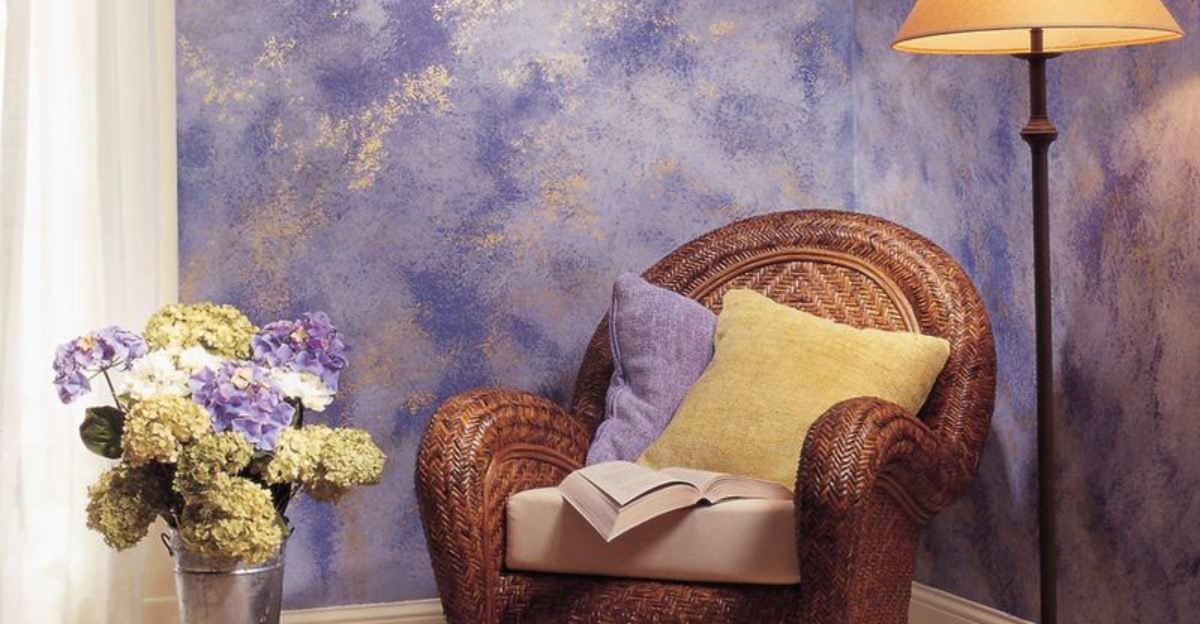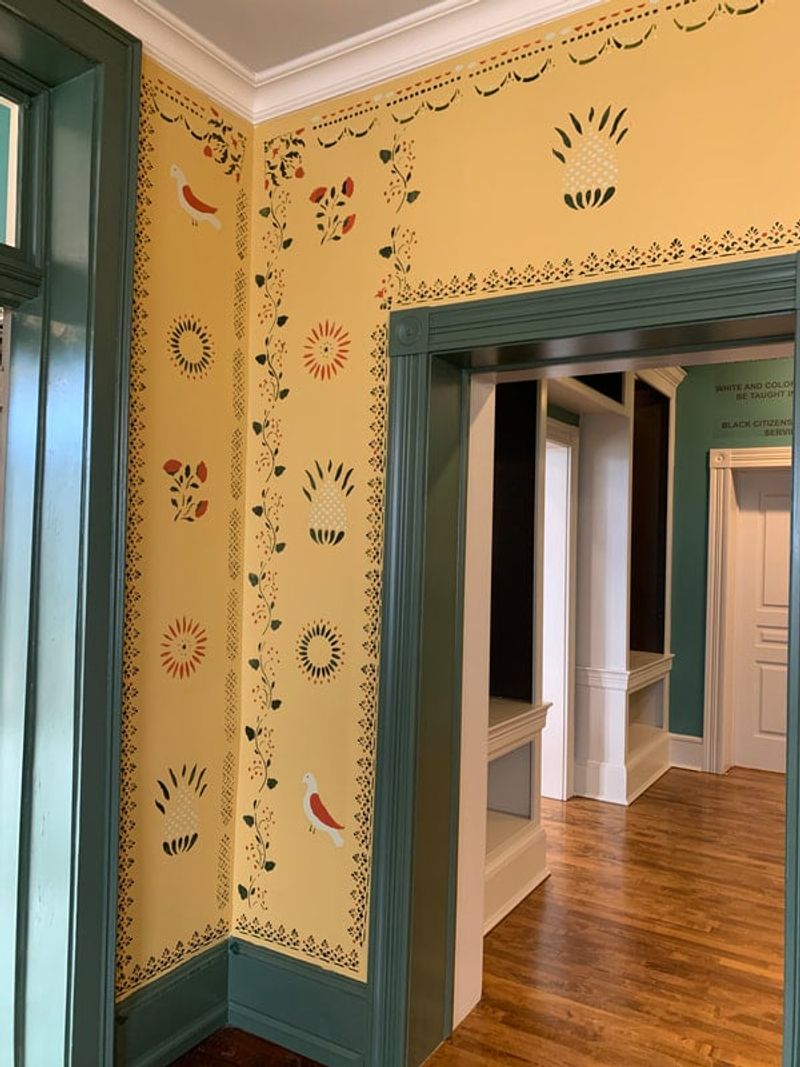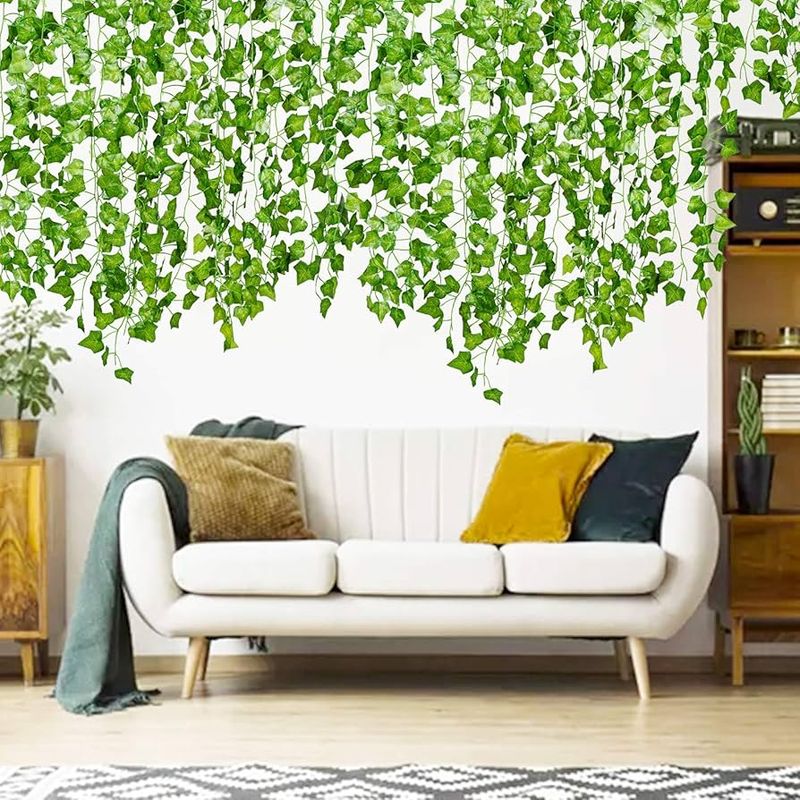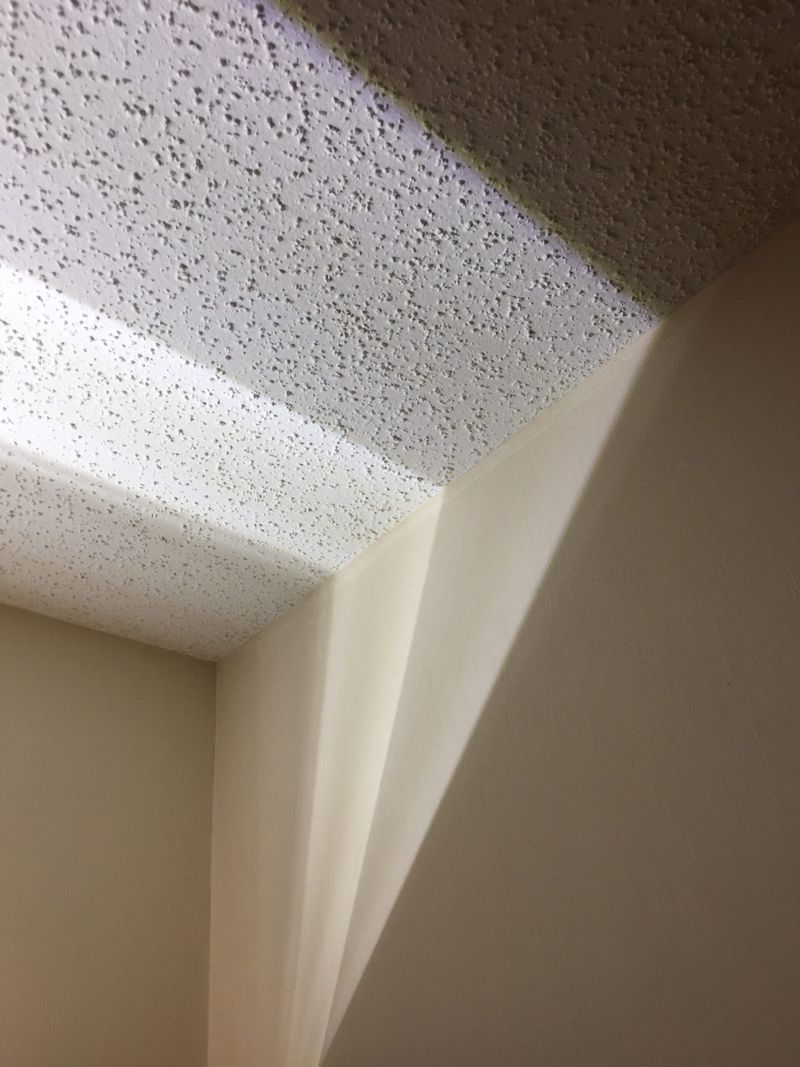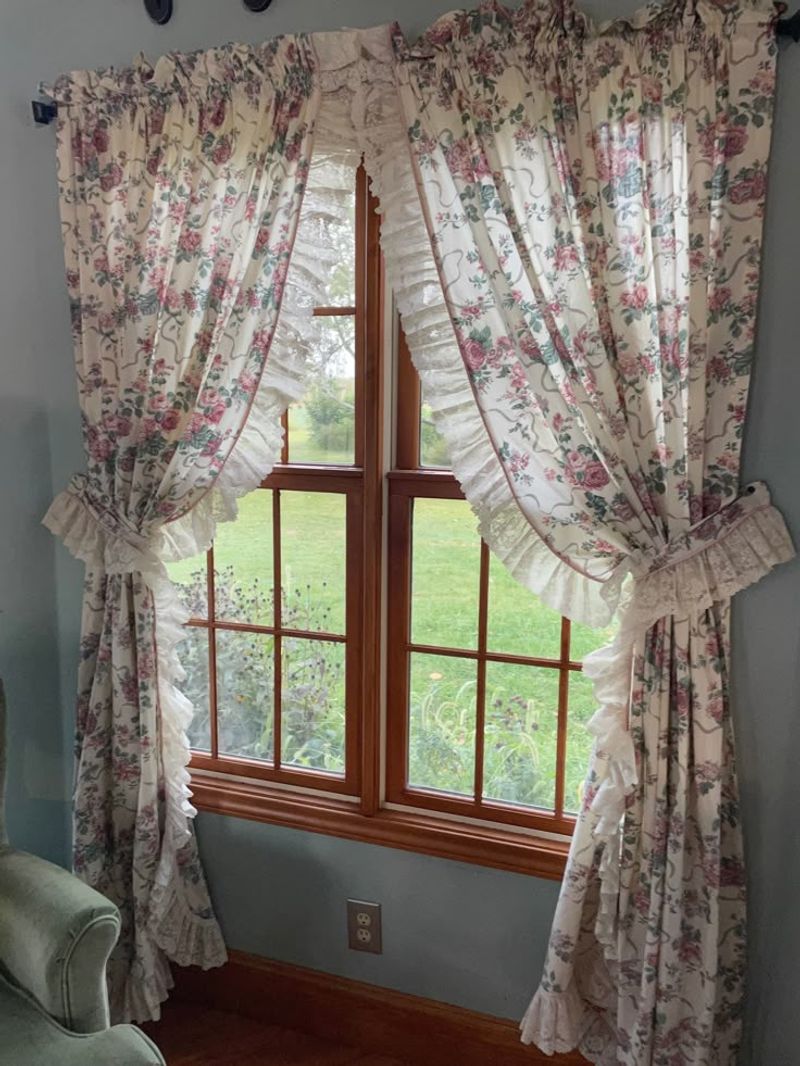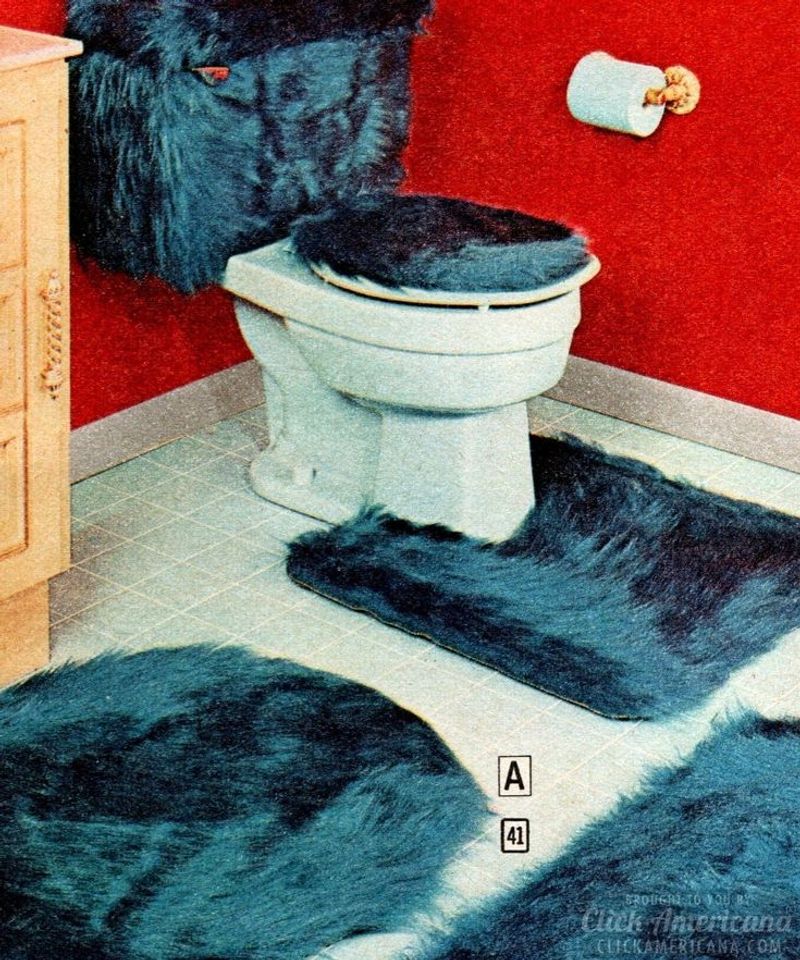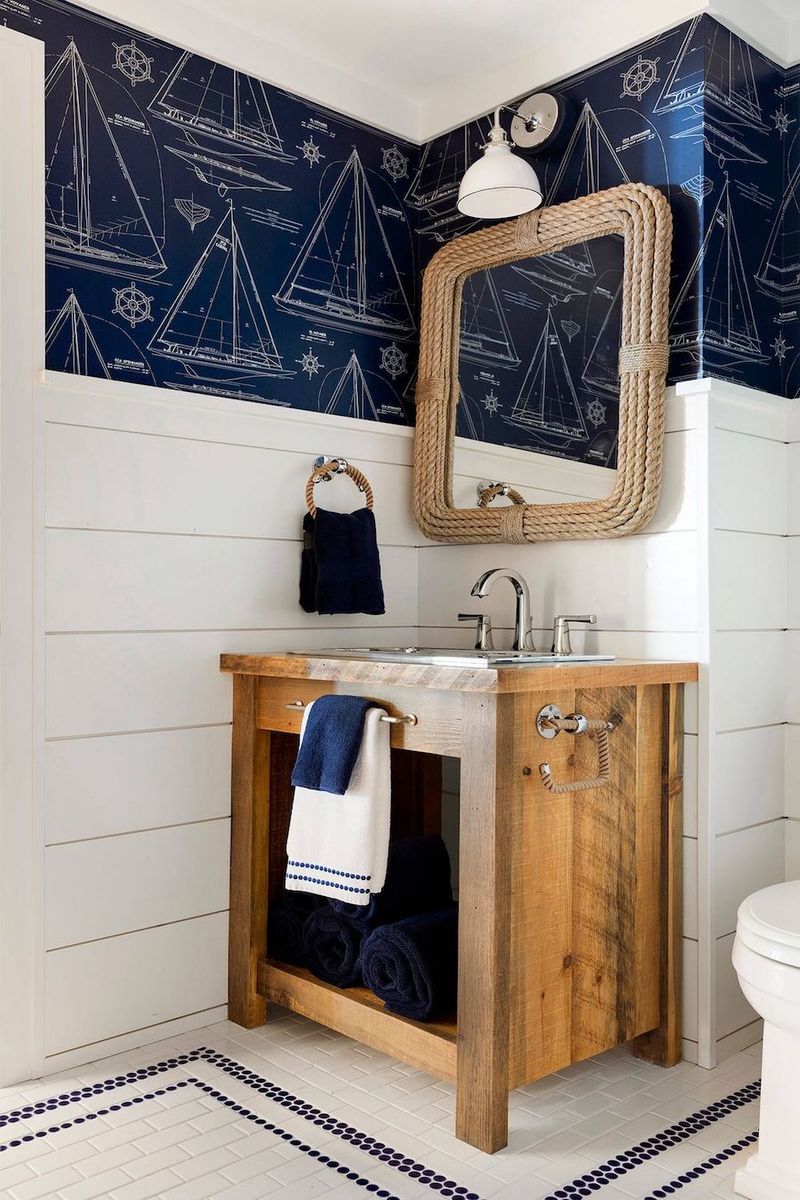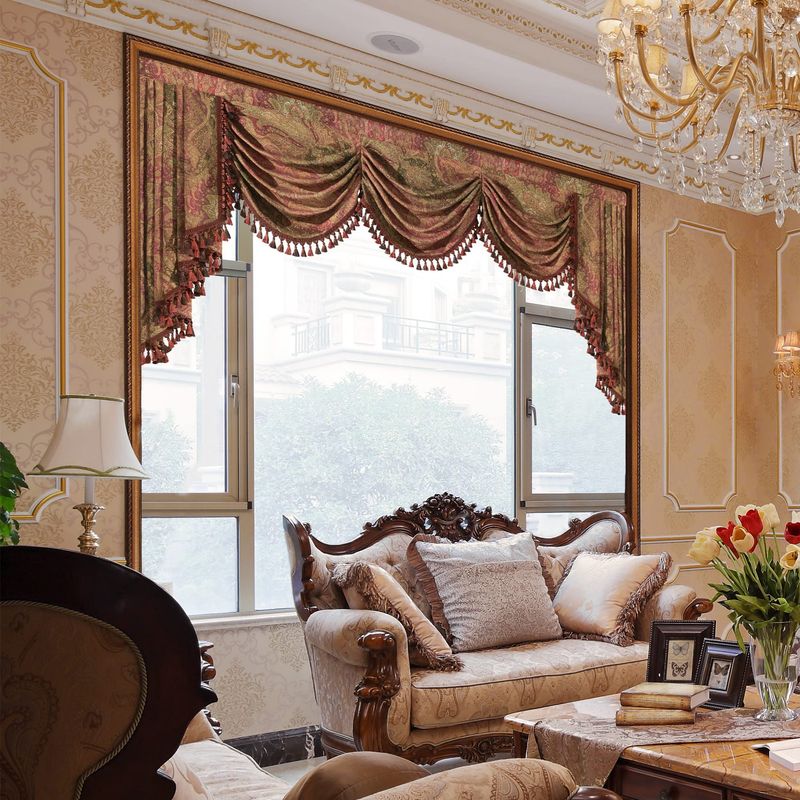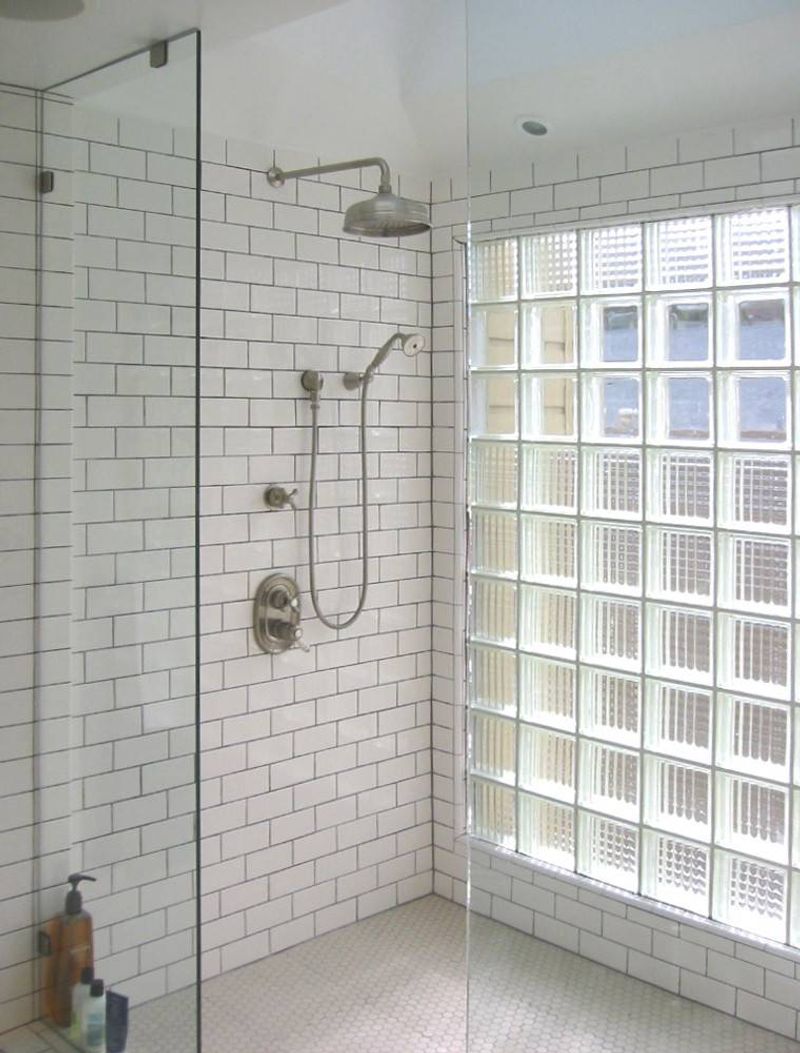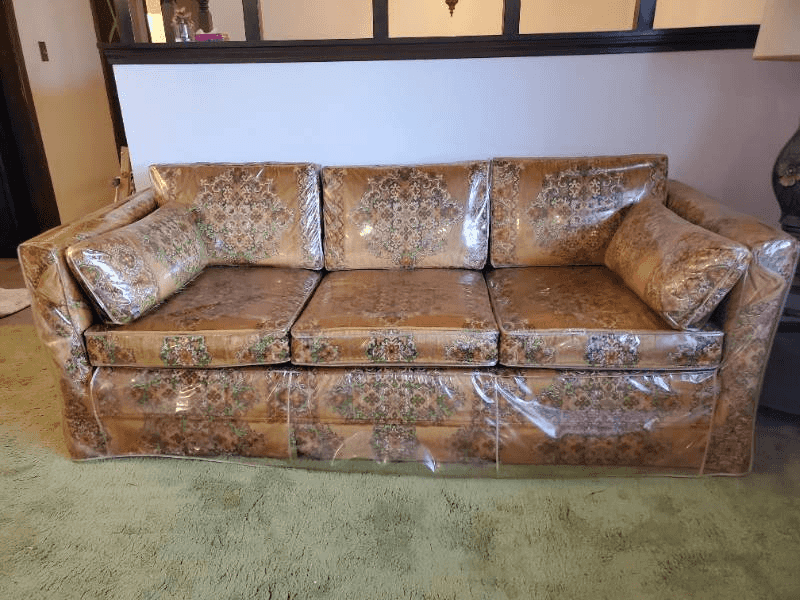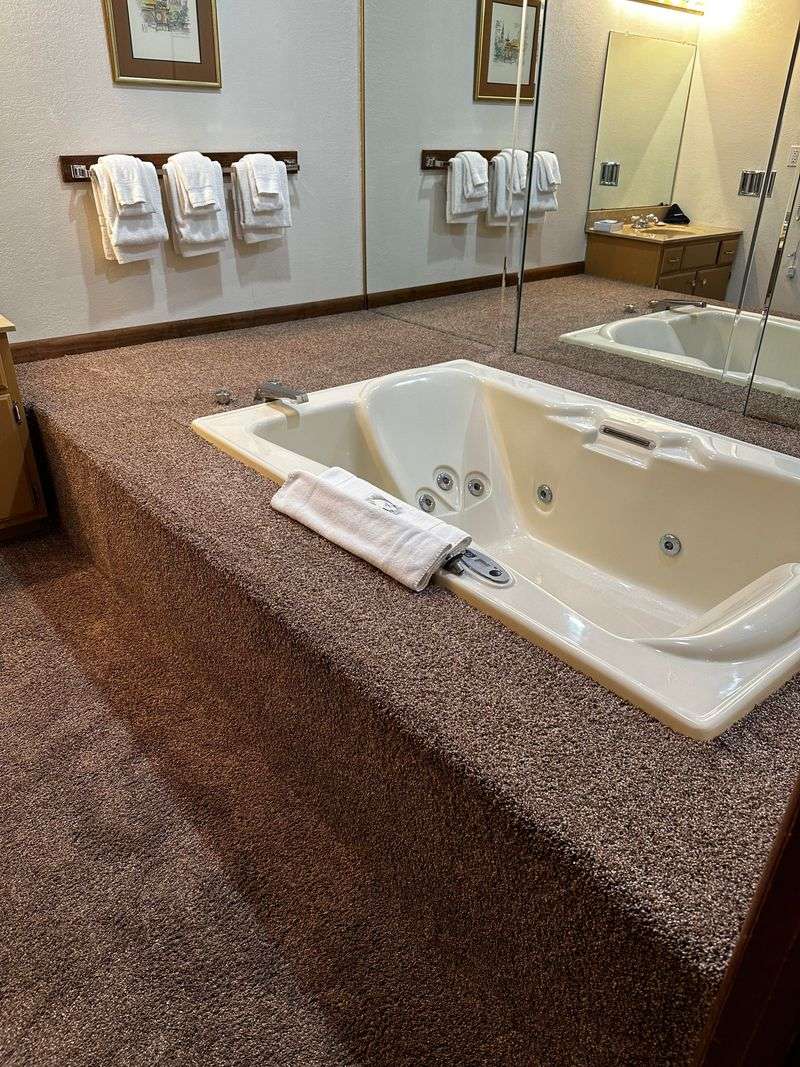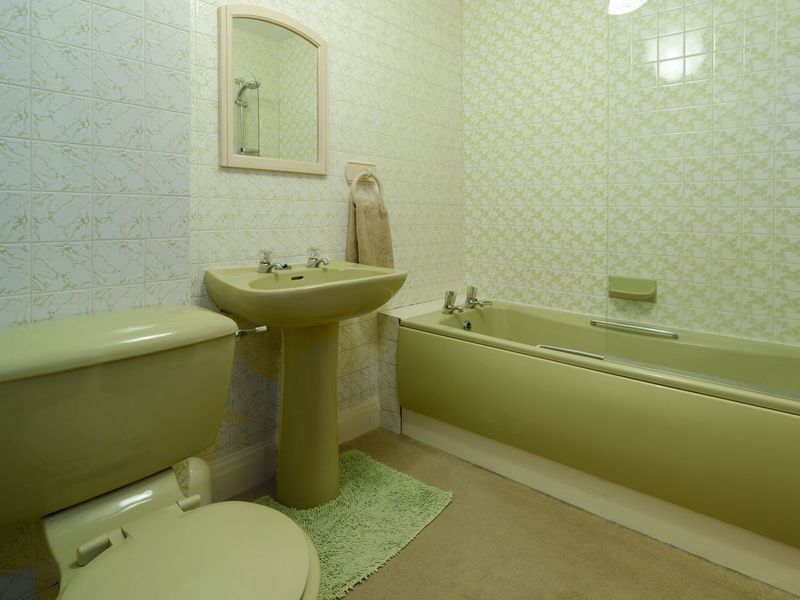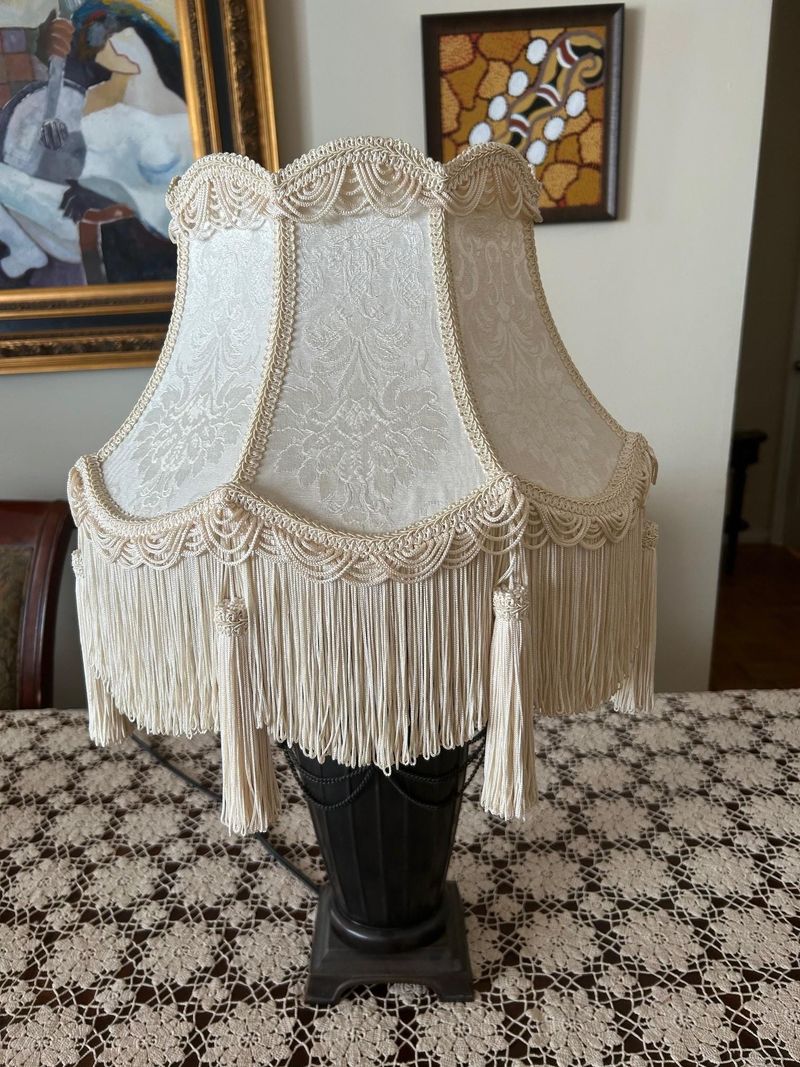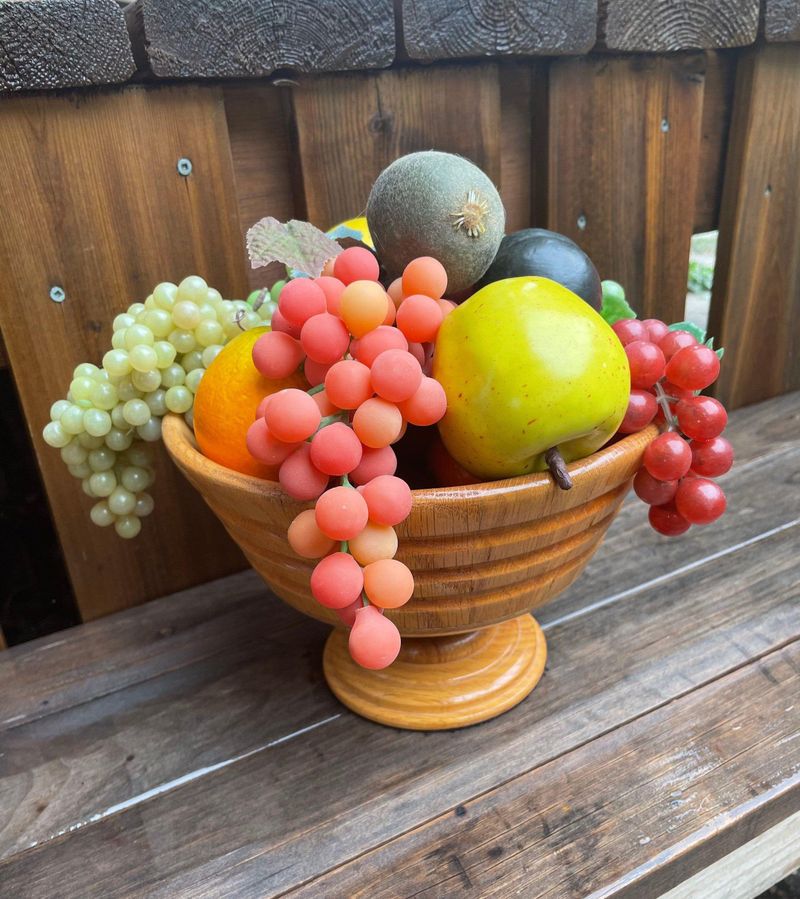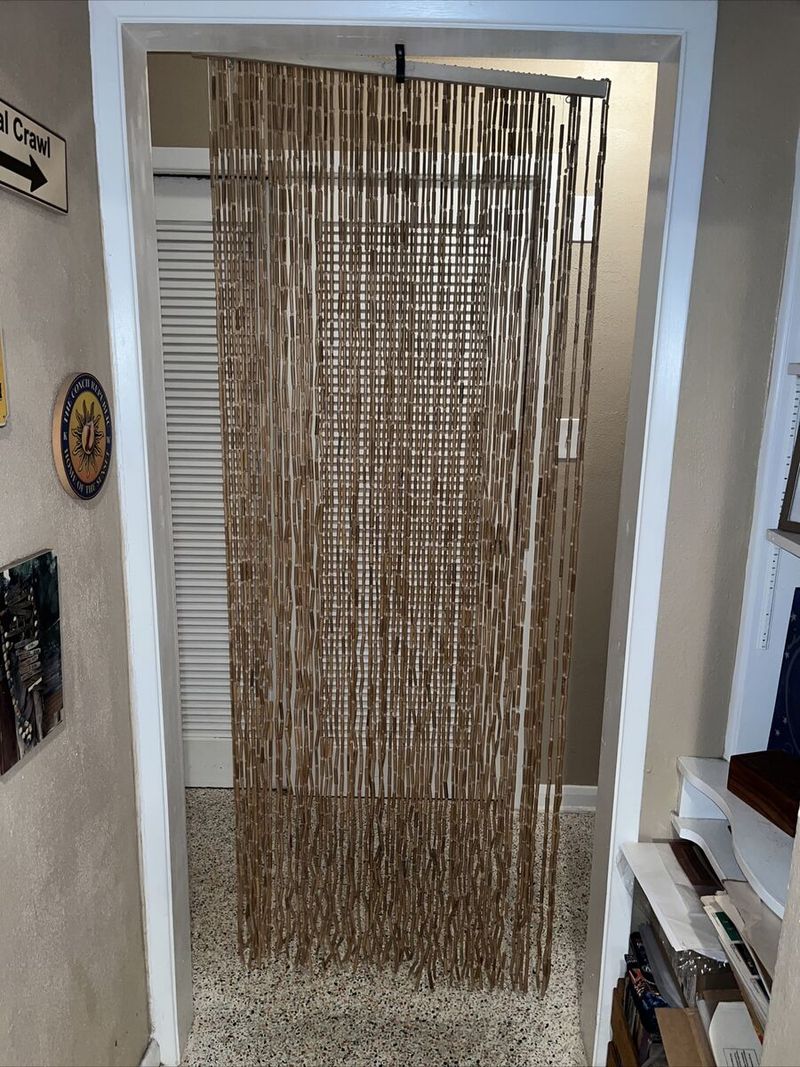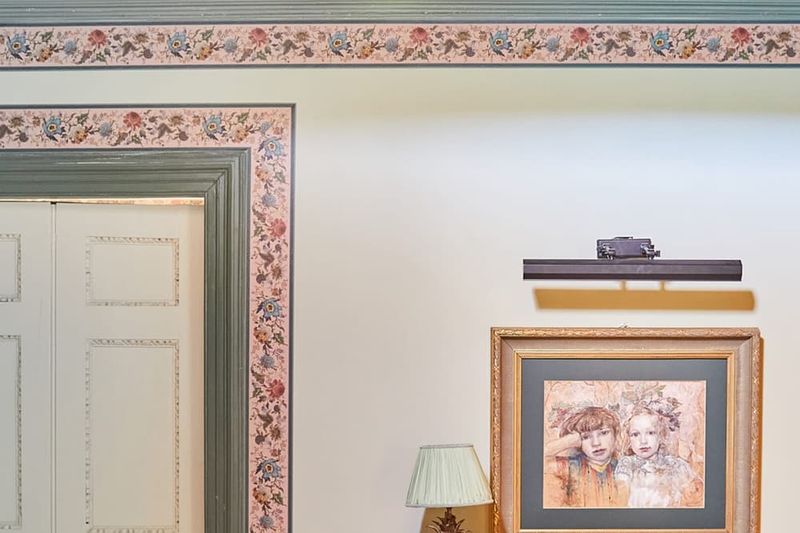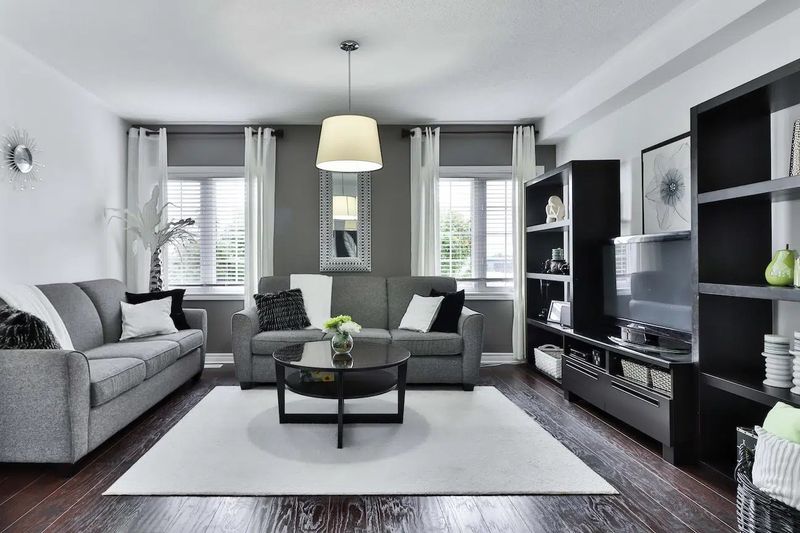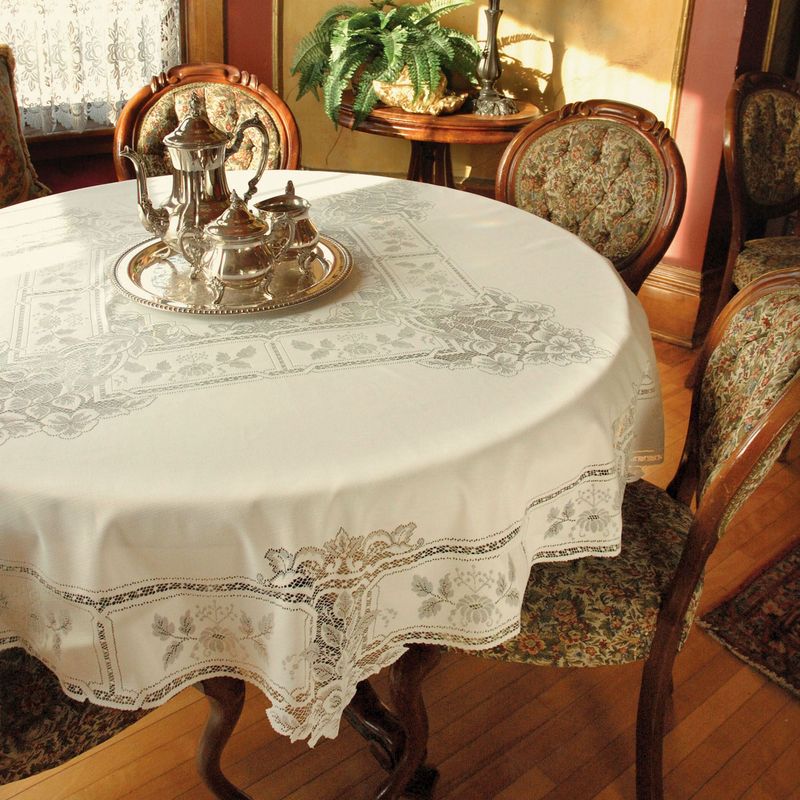Remember those home decorations we once thought were the height of style? The ones our parents proudly displayed or that we eagerly picked up at department stores in the ’80s and ’90s?
Well, interior design trends have drastically changed since then. What used to be considered fashionable has now become outdated, tacky, or simply impractical.
Let’s take a nostalgic yet critical look at 18 once-beloved home decorations that have fallen from grace.
1. Wall Stencils
Back in the day, stenciling floral or country-style patterns across kitchen walls seemed like an affordable way to add charm. Many DIY enthusiasts spent weekends carefully dabbing paint through plastic templates.
Now designers cringe at these dated patterns that often look handmade in the wrong way. Modern walls favor clean lines and subtle textures rather than busy patterns that instantly time-stamp your home to a specific decade.
2. Faux Ivy Garlands
Winding their way across kitchen cabinets and along the tops of walls, plastic ivy garlands were once considered a touch of greenery without maintenance. Homeowners would arrange them around picture frames and along banisters.
Unfortunately, these dusty green imposters quickly became magnets for actual dust and cobwebs. The plasticky sheen and unrealistic coloring of these vines now scream ‘artificial’ in an era that celebrates either real plants or nothing at all.
3. Popcorn Ceilings
Whoever thought spraying cottage cheese texture onto ceilings was a good idea? Yet these textured nightmares dominated homes for decades, supposedly hiding imperfections and reducing noise.
Besides collecting dust and being impossible to clean, many contained asbestos before the 1980s. Today’s homeowners are paying good money to have these bumpy surfaces scraped away in favor of smooth, clean ceilings that don’t look like they’re suffering from a skin condition.
4. Ruffled Curtains
Frilly, gathered fabric once adorned windows in practically every suburban home. These ruffled curtains, often in floral patterns or pastels, were considered the epitome of feminine charm and warmth.
Interior designers now advocate for cleaner lines and more purposeful window treatments. The excessive fabric and dust-collecting ruffles have given way to simpler panels that frame views rather than dominate them. Your grandmother might disagree, but the ruffly look is decidedly passé.
5. Toilet Seat Covers
These plush bathroom accessories were meant to add comfort and style to the coldest seat in the house.
Hygiene experts now collectively shudder at the thought of fabric wrapped around toilet fixtures. These covers trap moisture and bacteria, creating a cleaning nightmare. Modern bathrooms favor sleek, easy-to-sanitize surfaces over questionable fabric accessories that match the bath mat.
6. Themed Bathroom Sets
Remember those coordinated bathroom sets with seashells, fish, or lighthouses on everything from the shower curtain to the toothbrush holder? These matchy-matchy collections once dominated bathroom décor aisles.
The overly coordinated look now feels contrived and kitschy. Contemporary design favors mixing complementary pieces rather than buying the entire collection. Your nautical-themed bathroom might have seemed clever at the time, but it’s now considered about as sophisticated as wearing head-to-toe denim.
7. Heavy Valances
Those stiff, structured window toppers with swags, jabots, and cascades once signified luxury in formal living rooms and dining areas. Homeowners would spend small fortunes on these elaborate fabric arrangements that required professional installation.
Today’s windows prefer to breathe free with minimal coverage that maximizes natural light. The heavy, dust-collecting window treatments that blocked sunlight and added visual weight to rooms have been replaced by simpler solutions that don’t require their own vocabulary lessons.
8. Sponge-Painted Walls
Armed with sea sponges and multiple paint colors, homeowners of the ’90s created textured walls that were supposed to look Mediterranean or Tuscan-inspired. The technique was embraced as a DIY way to add interest to boring walls.
What seemed artisanal then looks amateurish now. The uneven, often garish color combinations have been replaced by clean, single-color walls or carefully considered accent walls. If you’re still living with sponge-painted walls, painters everywhere are standing by with primer.
9. Glass Block Windows
Once considered modern and innovative, glass block windows became the go-to solution for bathrooms and basements in the ’80s and ’90s. Their translucent nature provided privacy while still allowing light to filter through.
The chunky, industrial look of these windows now dates a home instantly. Contemporary design favors sleeker window solutions with frosted or smart glass that doesn’t look like it belongs in a high school gymnasium. The maintenance nightmare of cleaning between those blocks adds practical reasons to their decline.
10. Plastic Slipcovers
Walking into a living room and hearing that distinctive crinkle as you sat down was once a common experience. Transparent plastic covers protected prized furniture from spills, pets, and children.
While practical in theory, these covers made sitting uncomfortable and sweaty. Modern homes have embraced more elegant solutions like performance fabrics that resist stains without sacrificing comfort. The plastic-wrapped sofa has become a symbol of outdated thinking that values preservation over actual use and enjoyment.
11. Carpeted Bathrooms
Stepping onto plush carpet after a shower once seemed luxurious, leading many homeowners to fully carpet their bathrooms. This trend extended beyond bath mats to wall-to-wall coverage, often in colors matching the fixtures.
Moisture and carpeting create a breeding ground for mold and mildew – something we now understand better. Modern bathrooms feature water-resistant flooring like tile or vinyl that can handle splashes without becoming science experiments.
12. Avocado Green Fixtures
The 1970s brought us bathroom suites in memorable colors like avocado green, harvest gold, and burnt orange. Homeowners embraced colored toilets, sinks, and bathtubs as fashion-forward alternatives to boring white porcelain.
These colorful fixtures now serve as time capsules of questionable taste. White and neutral fixtures have reclaimed their place as timeless choices that don’t clash with changing decor trends. Finding replacement parts for that avocado toilet has become a treasure hunt that most homeowners would rather avoid.
13. Pleated Lampshades
Victorian-inspired pleated lampshades with fringe and tassels once adorned side tables in formal living rooms across America. These elaborately gathered fabric creations were often paired with ornate ceramic or brass lamp bases.
Light fixtures have since evolved toward cleaner lines and more efficient light diffusion. The dust-collecting pleats and dangling embellishments have been replaced by drum shades and architectural designs. Those fussy lampshades now look like they’re wearing too much makeup for a casual gathering.
14. Fake Fruit Bowls
Waxy, too-perfect apples and grapes once filled decorative bowls in dining rooms and kitchens nationwide. These dust-collecting imposters were meant to suggest abundance and hospitality without the inconvenience of actual perishable food.
The artificial produce has largely been replaced by either real fruit or nothing at all. Today’s decorators recognize that few things look more obviously fake than plastic bananas that never ripen. The fake fruit bowl has become a symbol of artifice over authenticity in home décor.
15. Beaded Curtains
Hanging strands of beads or bamboo in doorways became popular during the bohemian ’60s and ’70s. These clacking dividers were meant to separate spaces while maintaining an open feeling and adding a touch of exotic style.
The reality was noisy entrances and constantly tangled strands that caught on clothing. Modern room dividers favor sliding panels, screens, or architectural elements that don’t sound like wind chimes when you walk through them. The beaded curtain has retreated to college dorms and vintage shops.
16. Floral Wallpaper Borders
Running along the tops of walls just below the ceiling, these narrow strips of wallpaper featured everything from country geese to Victorian roses. DIY decorators would carefully paste these borders to add a finishing touch to rooms.
The horizontal line created by these borders tends to visually lower ceilings and chop up wall space. Contemporary walls favor either full wallpaper treatments or clean paint. The dated patterns and arbitrary horizontal division have made wallpaper borders as welcome as shoulder pads in modern fashion.
17. Matching Furniture Sets
Purchasing an entire bedroom or living room suite at once was once considered the height of coordinated decorating. These matching sets included identical finishes, hardware, and styling across every piece.
Interior designers now promote mixing complementary pieces for a more collected, personal look. The showroom-perfect matching set approach feels corporate and impersonal by today’s standards. Modern homes embrace eclectic combinations that tell a story rather than looking like a furniture store display.
18. Lace Tablecloths
Grandmothers everywhere once proudly displayed intricate lace tablecloths for special occasions and sometimes everyday use. These delicate coverings symbolized formality and tradition in dining spaces.
The high-maintenance, often yellowing fabric has been replaced by easier-care table linens or bare tabletops that showcase wood grain. Contemporary dining embraces a more casual approach where the table itself is often the star. Those heirloom lace cloths have largely been relegated to storage boxes or vintage shops.

